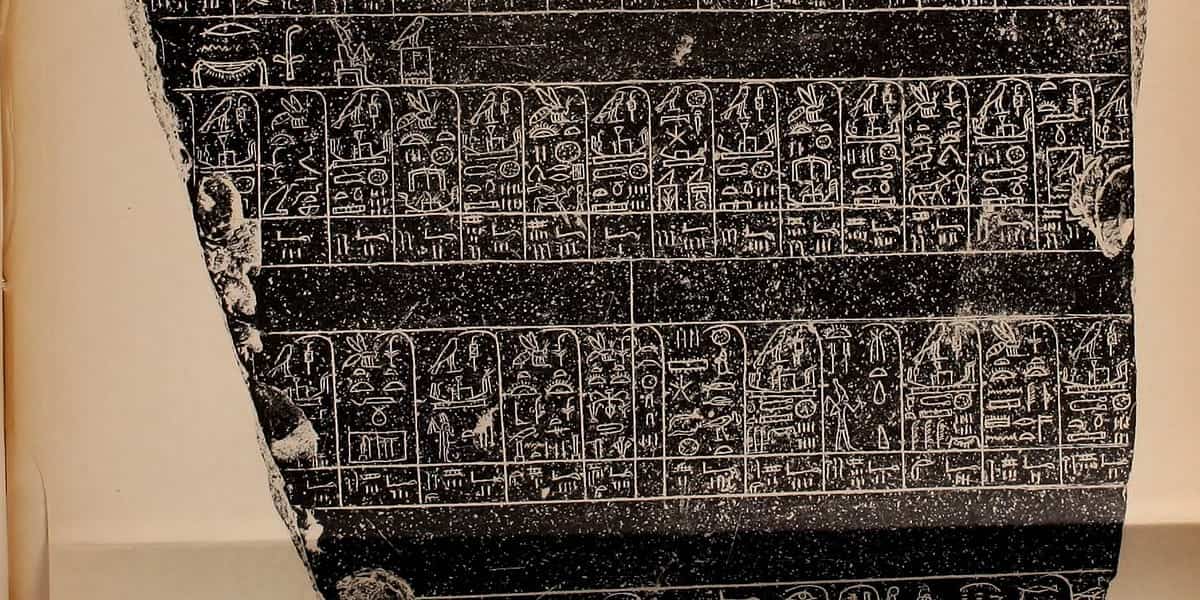Welcome to the “History of Egypt” blog by Top Ten Egypt, where we peel back the layers of time to uncover fascinating tales from the land of pharaohs. In this installment, we delve into the mysteries surrounding the Palermo Stone, an extraordinary artifact that sheds light on the rich historical tapestry of ancient Egypt. Join us on a captivating journey as we explore the significance of this enigmatic relic.
An Ancient Chronicle:
The Palermo Stone, also known as the Royal Annals or the Palermo Fragment, is one of the most important surviving historical records from ancient Egypt. Dating back to the Old Kingdom (circa 2490-2160 BCE), this stone artifact offers glimpses into Egypt’s dynastic history, chronicling the reigns of pharaohs, significant events, religious traditions, and more.
The Unique Structure:
The Palermo Stone is a fragment of a larger stele that was originally carved from limestone. It measures about six feet in length and bears inscriptions in the form of a horizontal grid, with each row representing a different pharaoh’s reign. Although damaged over time, the surviving sections of the stone provide valuable insights into the ancient Egyptians’ meticulous record-keeping traditions.
Decoding Ancient Lists:
The inscriptions on the Palermo Stone are primarily in hieroglyphic script. They comprise lists of yearly events, including religious festivals, offerings, construction projects, military campaigns, taxation, and more. These records were meticulously maintained to highlight the accomplishments of each pharaoh and present a comprehensive timeline of Egypt’s ruling dynasties.
Piecing Together the Puzzle:
Archaeologists and historians have devoted considerable effort to deciphering the fragmented inscriptions on the Palermo Stone. By comparing and cross-referencing its content with other historical sources, such as temple inscriptions and papyrus scrolls, experts have endeavored to reconstruct a coherent narrative of ancient Egypt’s chronology and its pharaohs’ reigns.
Historical Significance:
The Palermo Stone is invaluable for its contribution to our understanding of ancient Egyptian history. By providing a primary source for the documentation of events, it offers a broader perspective on the political, religious, and cultural aspects of this intriguing civilization. It allows us to piece together the puzzle of Egypt’s dynastic periods and trace the rise and fall of influential pharaohs.
Unlocking Egypt’s Past:
The Palermo Stone serves as a time capsule, transporting us back to the ancient world and granting us a glimpse into Egypt’s vibrant past. It unveils the grandeur of monumental constructions, the ceremonious rituals of numerous pharaohs, and the intricate mechanisms of administration that ensured the prosperity of the kingdom along the Nile.
Embark on a Time-Traveling Voyage:
At Top Ten Egypt, we invite you to embark on an unforgettable journey to Egypt and immerse yourself in the fascinating stories preserved within the Palermo Stone. Visit renowned museums, such as the Egyptian Museum in Cairo or the Luxor Museum, where you can marvel at this unique relic and gain profound insights into the ancient civilization that thrived thousands of years ago.
The Palermo Stone stands as a remarkable testament to the ancient Egyptians’ dedication to historical documentation. As you delve into Egypt’s rich heritage, let the inscriptions etched on this fragment of limestone transport you to a bygone era. Join Top Ten Egypt on a voyage through time, where you can explore Egypt’s mesmerizing historical sites and discover the captivating stories concealed within the Palermo Stone—a tangible link to the majestic tapestry of ancient Egypt’s illustrious past.



Comment (0)